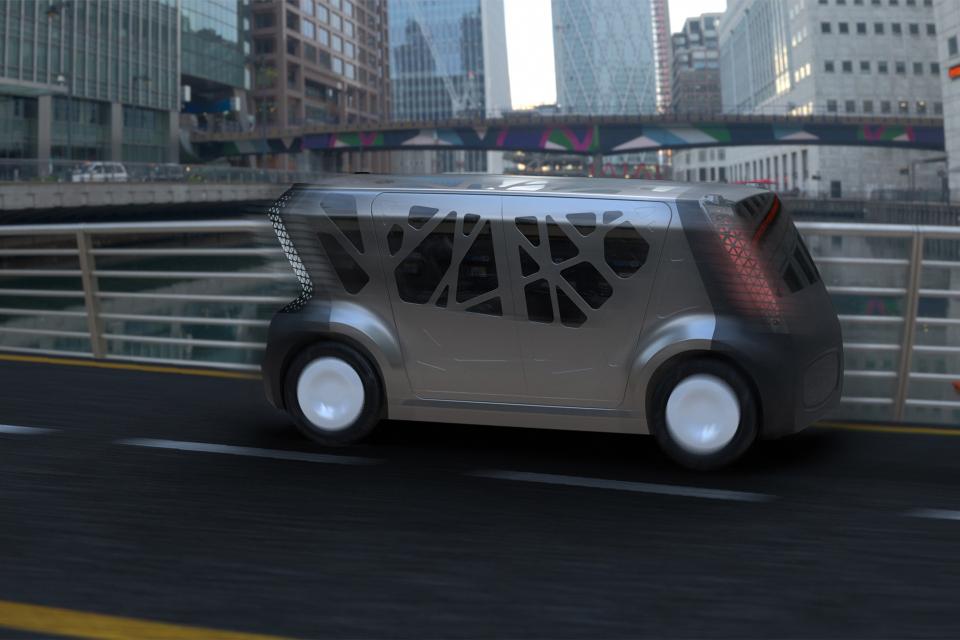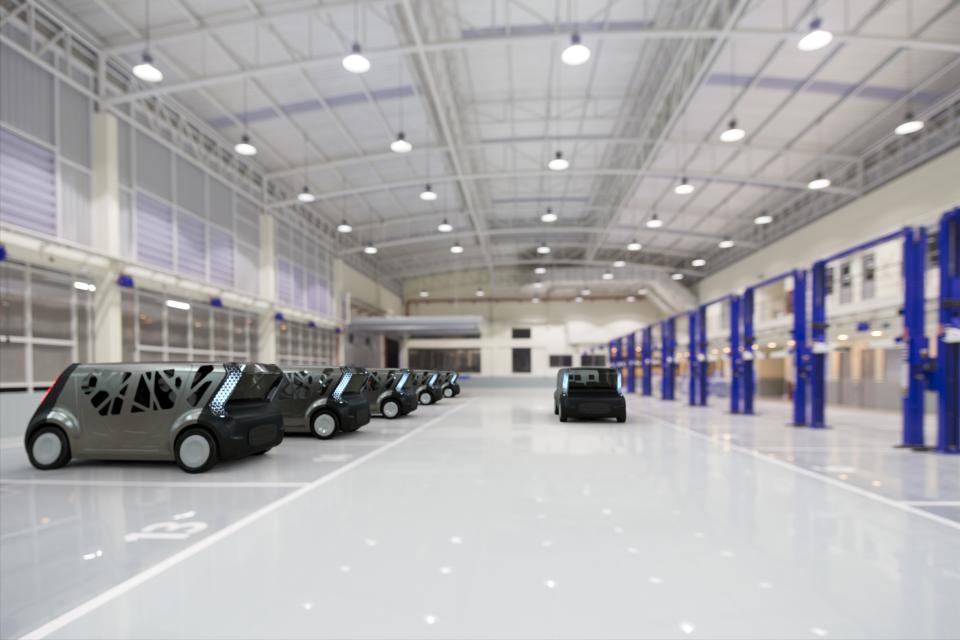Steel E-Motive is a vehicle engineering program from WorldAutoSteel which is developing virtual concepts for two fully autonomous and connected electric vehicles designed for mobility as a service (MaaS) applications. They are using Advanced High-Strength Steel (AHSS) technologies and products to design autonomous vehicle concepts to enable MaaS solutions which are safe, affordable, accessible and environmentally conscious. The vehicles are conceptual and virtual, with no plans to go into manufacturing, but the level of validation could facilitate a future prototype build, depending on industry interest and feedback.
WorldAutoSteel member Tata Steel, with locations in the UK and Netherlands, is one of the 18 members actively collaborating on the Steel E-Motive project. Peter Jones, Product Design & Engineering Knowledge Group Leader for Automotive shares his thoughts on the collaboration.
"When I was asked in August 2020 by my colleague Jan Bottema, Automotive Programme Manager, to be the Tata Steel representative on the WorldAutoSteel E-Motive project the world was in lock down because of the Covid pandemic and travel was banned both overseas and within your own country. So instead of face-to-face, a series of virtual meetings started with team members working in various time zones across the world.
The task we set Ricardo, who were contracted as the design/engineering partner, and ourselves was to design an electrically powered autonomous vehicle in 18 months that would meet all the vehicle legal requirements in 2030.
Ricardo would present progress so far and then show various design scenarios to overcome some of the structural challenges as the vehicle developed. They asked for direction from the audience by asking questions on which vehicle style the members wanted to use for the E-Mobility programme and we had a vote for one of the 8 styles presented. Also more technical questions such as ‘will the side doors open like a traditional vehicle or slide towards the front and rear of the vehicle’ where put forward.
We then had a briefing from WorldAutoSteel and we were all given some ‘homework’ to present back at the next meeting. I was asked to look at both tube and sheet/pillow hydroforming because Tata Steel still has great knowledge about the design and manufacture of hydroform parts. Our expertise dates from the time we were involved in tailored tubes and were working with vehicle manufacturers and Tier 1’s to use tubular hydroform parts in vehicle structures. I was originally asked to look at roll forming, but one of our partner steel companies asked if we could swop subject as they have very little knowledge of hydroforming. All of the outputs from the steel companies were then made available to Ricardo as a library of manufacturing techniques. Eventually after a couple of meetings the members of the Ricardo team started to ask questions about materials and the rationale behind design solutions.
The project timeline of 18 months only, which is about the normal time from start to finish for a normal car, was slightly ambitious for the design and engineering of an autonomous vehicle, as it was the first time Ricardo or the steel companies have been involved in such a project. The first thing you notice with an autonomous vehicle is that there isn’t an engine bay at the front, which means that passengers sit very far forward, maybe within the ‘crash zone’. This caused some major issues and compromises we had to resolve without affecting the vehicle mass or the project timeline. We also had to use the latest or next generation materials available from steel companies around the world, be class competitive in terms of cost and weight, and never meet in person with our team.
To deliver the engineering in time, Ricardo did indicate 16 weeks before the deadline of the project, that instead of us continuing working on all parts of the design we should collaboratively focus on solving the main problem; to meet the Small Overlap Rigid Barrier (SORB) crash test, which is very challenging for a vehicle with no engine bay. When we were discussing the alternative designs Ricardo had tried to solve this problem, I suggested that we could move the passenger position rearwards by 50mm and move the front bumper forwards by 50mm, so effectively allowing an additional 100mm of crush space. This was adopted by the team, but needed a tweak to the style for the bumper position change.
Eventually in March this year we all met face-to-face in Los Angeles and were asked to bring with us our companies view on the material choices made by Ricardo. As the design was nearing completion and needed optimising for cost, weight and performance, ideally you aim for the lowest cost solution with the lowest weight that meets the design specification and during the optimisation process you have to trade off these requirements against one another to achieve a happy medium. Happily, I can report that the E-Mobility vehicle has now achieved all of its design targets for crash, structural performance and weight. The structure is also using innovative designs and processes including hydroforming."
Find out more
Steel E-Motive engineering and validation will be completed later this year, at which time the team will prepare to deliver design concepts and final results globally Stay on the Steel E-Motive journey with us as more engineering decisions and solutions will be revealed between now and the end of the year.
Learn more about: Steel E-Motive Vehicle - STEEL E-MOTIVE (steelemotive.world)
>> Return to the main Automotive blogs page




































































































































































































































